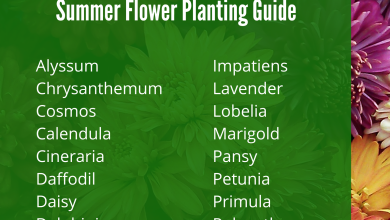Garden pests: The 4 most common pests and how to eliminate them
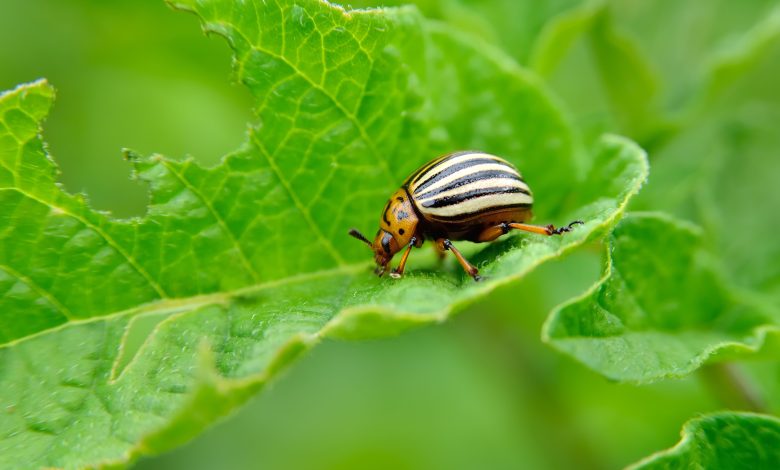
As you may have already seen in the «Pests and diseases» category, we are compiling information and advice on how to fight garden pests, those little bugs on plants that can attack the vegetables in our garden and spoil the harvest. In that category you can find specific articles about each of the orchard pests, but if you are new here or want to have an overview of the most common pests, this is the perfect post!
Today we will talk about the pests that most frequently affect garden plants because they have numerous hosts, that is, garden pests that can affect a lot of different species or types of plants. These pests in entomology are known as polyphagous pests .
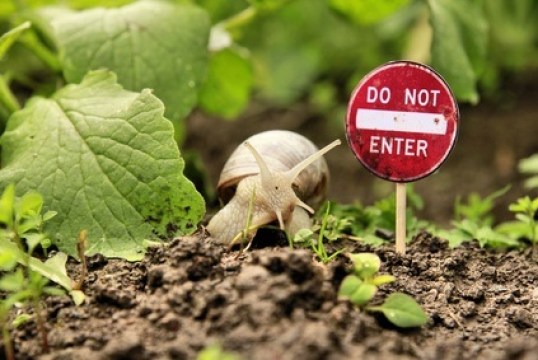
The 4 most common garden pests
1. The aphid
Aphids are one of the main garden pests. They are small (1 to 3 mm) and can be of many colors: green aphid, yellow aphid, black aphid, red aphid…
Despite their small size, aphids can cause very serious damage, since in a few days they can go from having a few dozen in the garden to thousands of them. This is because the females that hatch from the eggs reproduce by parthenogenesis and can produce up to 150 offspring each without the need for a male to fertilize them.
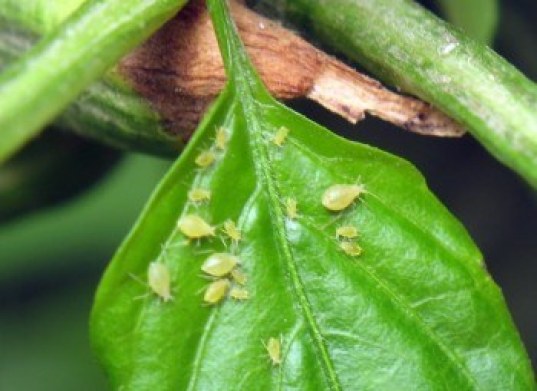
In addition, both larvae and adults cause damage to plants. The former make galleries in the leaves and the adults bite them to absorb the sap and cause yellow spots to appear and curl up. They also produce honeydew, which makes leaves sticky and can attract other pests such as ants.
Another problem with aphids is that they can transmit viruses to plants. If you have detected an aphid infestation and, some time later, you begin to see yellow spots on the leaves, it is very likely that the aphid has transmitted a virus (click on the previous link if you want to know more about plant viruses).
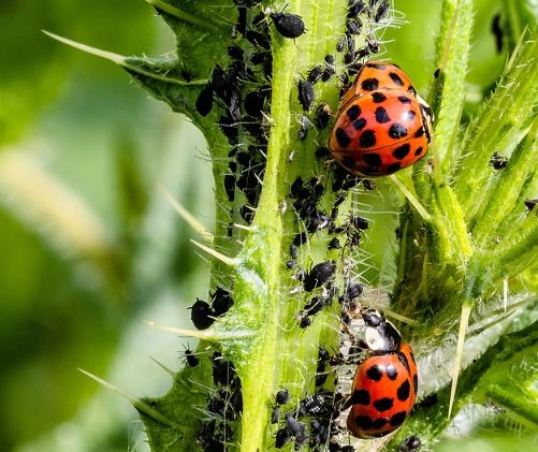
This is a very polyphagous pest, so it is best to try to prevent it because once it appears in the garden it can spread from one plant to another and be very difficult to eliminate. In the post Aphids: how we can control them you have some effective preventive measures and also treatments that can help you control aphid pests if they have already appeared in your garden.
In organic gardens, the use of aphid predators, such as ladybugs, is very common (if you are interested in this topic of «natural enemies of pests», take a look at the article How to raise ladybugs at home, in which you can see a video in which Álvaro teaches us how to make a “mariquitarium”.
2. The white fly
Although it may seem so because it has two wings, it is not actually a fly. The whitefly is one of the most dangerous pests in greenhouses (very common in them because they prefer humidity and high temperatures). In addition, it can also affect all kinds of vegetables outdoors, especially during spring and summer.
Like aphids, whiteflies bite the leaves (so they can transmit viruses), and they also secrete honeydew.
Yellow traps, like the one in the photo below, can be a good method of controlling this pest. You can see other solutions in the post Fight whitefly in the organic garden.
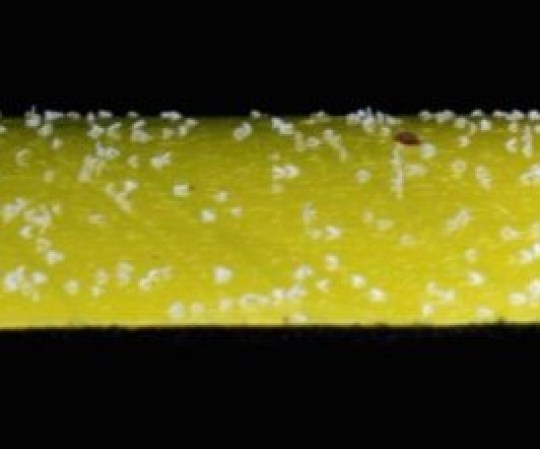
3. The spider mite
The red spider mite is a microscopic sized mite (barely 1 mm) that is difficult to distinguish without a magnifying glass. In spite of that, due to its high reproduction speed and its biting-sucking apparatus, it can cause severe damage to many garden crops (this is another of the most polyphagous pests out there).
It makes the leaves dry, even fall, leaves its spider web and can also transmit viruses.
The application of compost or spraying with water are some of the preventive measures to avoid this pest. If you think you already have it in the garden, read the ecological treatments that we propose in Fighting the red spider in the organic garden.
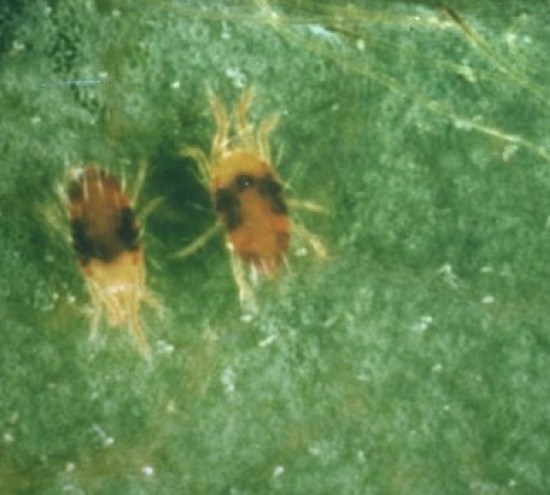
4. Slugs and snails
Who has not ever seen large round holes in the leaves of garden plants? Lettuce, chard, spinach, tomato, basil… Slugs and snails can feed on a lot of crops in the garden, especially those with tender leaves.
It is very typical to see them when the environment is cool and humid, so if it has just rained or you have watered, be attentive to be able to capture as many of them as possible. This is the first step to eliminate mollusk pests like these, and it will not be very difficult for you because, being large, they look good. If you think there are still some left, try the remedies that I suggested in the post Getting rid of slugs and snails in the garden.
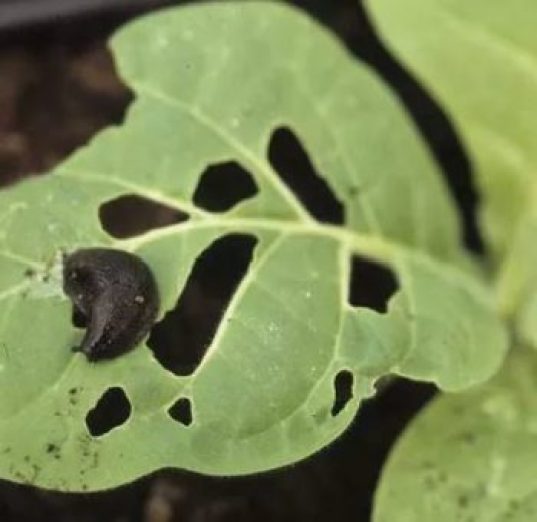
Garden pest remedies
In addition to the advice that I have given you in the linked posts, you can see broad-spectrum organic preparations in the post Natural Insecticides in the organic garden. 10 pest control products.
Also the presence of aromatic plants that repel pests or attract natural predators, helps keep pests away. Some examples of these plants are basil, yarrow or sage, and their use is a good preventive method to avoid the appearance of these pests in the garden.
References
- Nalam, V., Louis, J., & Shah, J. (2018).Plant defense against aphids, the pest extraordinaire. Plant Science, (April), 1–12.
- Simon, JC, & Peccoud, J. (2018).Rapid evolution of aphid pests in agricultural environments. Current Opinion in Insect Science, 26, 17–24.
- Foottit, RG, & Maw, HELBT-RM in LS (2017).Insects-Aphids. Elsevier.


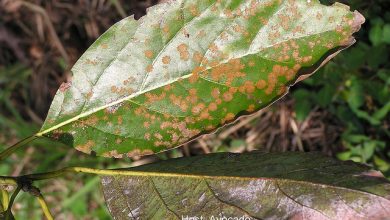
![Photo of Vine Diseases: [Characteristics, Types, Detection and Treatment]](https://www.complete-gardening.com/wp-content/uploads/2022/08/vine-diseases-characteristics-types-detection-and-treatment-390x220.jpg)
